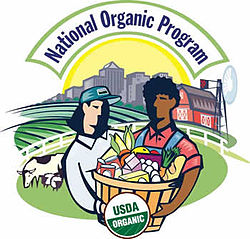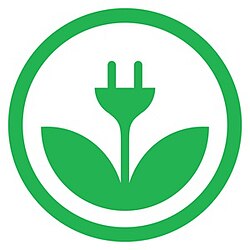Scope of definition
According to Belz, Frank-Martin, [1] the definition of sustainable product has six characteristics:
- Customer satisfaction: any products or services that do not meet customer needs will not survive in the market in the long term.
- Dual focus: Unlike purely environmental products, sustainable products focus on ecological and social significance.
- Life-cycle orientation: Sustainable products are environmentally friendly throughout their life. That is, from the moment the raw materials are extracted to the moment the final product is disposed of, there must be no permanent environmental damage.
- Significant improvements: Sustainable products contribute to solving socio-ecological problems globally or provide measurable improvements in socio-ecological product performance.
- Continuous improvement: as the state of knowledge, technologies, and societal expectations continually develop, sustainable products should also continuously improve social and environmental variation.
- Competing offers: sustainable products may still lag behind competing offers, therefore, the competing offers may serve as a benchmark regarding social and ecological performance.
Michael Braungart and William McDonough's book Cradle to Cradle: Remaking the Way We Make Things [2] expands on the life-cycle part of this definition. They suggest that every material and product should be made in a manner that when its useful life is over, all the materials of which it is made can be returned to the Earth after composting, or endlessly recycled as raw materials.
Product information
Product information can enable, facilitate, require or support consumers or other buyers and importers to identify sustainable products or sustainability of products. Sustainability standards and certifications are used for this purpose:
Sustainable product standards
Sustainability standards, also known as Voluntary Sustainability Standards (VSS), are private standards that require products to meet specific economic, social, or environmental sustainability metrics. The requirements include product quality or attributes, production and processing methods, and transportation. VSS are mostly designed and marketed by non-governmental organizations (NGOs) or private firms, and they are adopted by actors up and down the value chain, from farmers to retailers. Certifications and labels signal the successful implementation of a VSS. [3] Over the last decades, these standards have emerged as new tools to address key sustainability challenges such as biodiversity, climate change, and human rights. [4] The standards cover a wide range of sectors, such as agriculture, fishery, forestry, energy, textile, and others. According to the ITC standards map, agricultural products are the most commonly covered products, followed by consumer products. [5]
Overall standards
Nordic Swan Ecolabel
The Nordic Swan Ecolabel standard, which is distributed in Norway, Sweden, Denmark, Finland, and Iceland, mainly refers to distinguished products that have a positive effect on the environment. It likely has climate requirements that limit the amount of CO2 emissions where it is most relevant. [6] More than 3,000 products, predominantly household chemicals, paper products, office machinery, and building materials, have been issued with this label. The criteria account for environmental factors through the product's life cycle (raw material extraction, production and distribution, use and refuse). Thus the most important parameters are consumption of natural resources and energy, emissions into air, water and soil, generation of waste and noise.
Global Reporting Initiative (GRI)
GRI frames and disseminates global sustainability reporting guidelines for 'voluntary use by organizations reporting on the economic, environmental, and social dimensions of their activities, products, and services.' [7] According to GRI Guidelines, reporting bodies should consider stakeholders' interests and use social indicators and others that more accurately depict the organization's social and ecological performance.
Life Cycle Assessment
Life-cycle assessment (LCA) evaluates and discloses the environmental benefits of products over their complete life cycle, from raw materials extraction to final disposition. The International Organization for Standardization (ISO) has standardized the process of conducting LCA studies since 1997.
Product-oriented standards
Organic Food Labeling

Organic food are foods that are produced using methods involving no agricultural synthetic inputs, for instance, synthetic pesticides, chemical fertilizers, genetically modified organisms (GMO), and are not processed using irradiation, industrial solvents, or chemical food additives. [8] Currently, the United States, European Union, Canada, Japan and many other industrialized countries require food producers to acquire special criteria or certification to market their products as "organic". Apparently, organic food producers emphasize sustainable conservation of the social-ecological attributes such as soil, water and the whole ecosystem. International organizations such as the Organic Consumers Association supervise the development of organic food. According to the National Organic Program (NOP) in the US, a voluntary green-and-white seal on foods' packaging denotes that a product is at least 95% organic. [9]
MSC Labeling
The Marine Stewardship Council (MSC) is an independent non-profit organization established in 1997 to address the overfishing problem. Fisheries that are assessed and meet the standard can use the MSC blue ecolabel. The MSC mission is to 'reward sustainable fishing practices'. As of the end of 2010, more than 1,300 fisheries and companies had achieved a Marine Stewardship Council certification. [10]
FSC Labeling
The Forest Stewardship Council (FSC) is an international non-profit organization established in 1993 to 'promote forest management that is environmentally appropriate, socially beneficial and economically viable'. [11] Its main responsibilities for achieving the goal are standard framing, independent certification issuing and labeling. FSC directly or indirectly addresses issues such as illegal logging, deforestation and global warming and has positive effects on economic development, environmental conservation, poverty alleviation and social and political empowerment. [12] [13]
Fair Trade Labeling

Although there is no universally accepted definition of fair trade, Fairtrade Labeling Organizations International (FLO) most commonly refer to a definition developed by FINE, an informal association of four international fair trade networks (Fair trade Labeling Organizations International, World Fair Trade Organization - formerly International Fair Trade Association, Network of European Worldshops and European Fair Trade Association): fair trade is a trading partnership, based on dialogue, transparency and respect, that seeks greater equity in international trade. It contributes to sustainable development by offering better trading conditions to, and securing the rights of, marginalized producers and workers – especially in the South. Fair trade organizations, backed by consumers, are engaged actively in supporting producers, awareness raising and in campaigning for changes in the rules and practice of conventional international trade. [14]
U. S. Green Building Council LEED Rating System
The LEED Green Building Rating System evaluates environmental performance of all buildings over their life, providing the definitive standard for what constitutes a "green" building, persuading the consumer and building industry to develop products that are more environmentally and economically viable. [15]
EKOenergy label
EKOenergy is an ecolabel originating in Finland. It is becoming the continent-wide ecolabel for energy, which is supported by number European NGOs. It evaluates sustainability of electricity products on open energy markets. [16]
Green Seal
Green Seal is a North American non-profit ecolabel organization established in 1989. It generates life cycle-based sustainability standards for products, services and companies in addition to offering third party independent test organization certification for those meeting its standards. Green Seal was the first non-profit environmental certification program established in the United States. It currently has certified nearly 4,000 products and services within 400 categories. [17]

